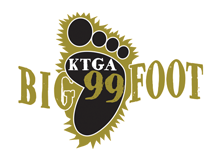November 14, 2022 |
Despite a year of trouble over its water infrastructure and uncertainty because the city audit was not completed, Rawlins now finds itself in a relatively good financial situation.
At a council work session two weeks ago, Interim City Manager Tom Sarvey broke down the city’s financial picture in light of the just finished audit. Sarvey, who joined the city in May as the finance director, moved through three separate reports—the Fiscal Year 2021 Audit, the Fund Reserve Report and the Financial Performance Report—to give the governing body a historical view of where the money has been coming from, where it’s been going and where the city stands now. Sarvey also offered recommendations on how to take advantage of the relative windfall in revenues over the last several years.
The big take away from Sarvey’s presentation is that the city’s general fund balance stands at $27 million. About $12 million is not assigned or restricted in any way and can be used as the governing body to address different trouble spots Sarvey identified.
Audio PlayerPictured above: Interim city manager, Tom Sarvey. Photo courtesy of the City of Rawlins.
The overall increase in revenues was close to $20 million, according to the graph that Sarvey prepared for the presentation. The main source of the revenue increases was sales tax, largely the result of wind energy construction in Carbon County.
The roller coaster graph will be familiar to many Wyoming residents. It represents the boom-and-bust cycle. Historically connected to oil, Sarvey said the wind energy boom is not built to last.
Audio PlayerThe wind energy projects weren’t the only one-time only shots to the Rawlins economy. Sarvey listed two others. One was intergovernmental revenues, primarily impact assistance funds again related to wind energy development. The other was $2.5 million in federal COVID-19 money, a lot of which was squirreled away into cash reserves.
During the same period that Rawlins was seeing a surge in revenues, expenses were flat. The result was that between 2018 and 2021, the city’s cash reserves essentially doubled from $13 million to $26 million.
Nearly $2 million is unavailable for spending or committed. Another $12 million is assigned through the budget process. Sarvey produced a pie chart to show where the assigned and committed dollars are flowing.
Audio PlayerAll of the diligent bookkeeping shows that sitting in the city’s general fund is a cash reserve of $12 million. Sarvey said the city could keep it there or choose to use the money to strategically address need projects.
Audio PlayerSarvey provided provided recommendations based on discussions with department heads and analysis of budgets from other Wyoming cities on how the money could be used.
One was to build up the city’s emergency reserve account, which could be used for trucks or other equipment and machinery that break requiring unexpected expenditures. Sarvey said the $4 million covers about 27% of the city’s annual budget, lower than other cities.
Audio PlayerSarvey recommended an emergency fund that would cover 50$ of the budget, which would require an increase from $4 million to $7.2 million.
Sarvey’s other recommendations included starting a funded depreciation account to pay for the purchase of equipment when expensive machinery reaches end of life. The city does not have a savings account now. According to the FY 21 audit, depreciable assets in the general fund amount to $34.9 million. The associated accumulated depreciation over time is $18m. Sarvey recommended using about $4-0r-$5 million to start a depreciation fund and construct a way to add to over time.
Other recommendations included replacing out of date equipment, restarting the water pre-treatment plant, upgrading city buildings, including police fire and city hall, as well as technology replacements.
Audio PlayerReplacing the SCADA computerized monitoring system for water and sewer plant and putting the water pre-treatment plant back online were at the top of the list for water infrastructure improvements.
Sarvey said his top concern was avoiding having to start the spring of 2023 with the reintroduction of city-wide water restrictions. Sarvey said time was lost this year chasing the SLIB grant. He recommended spending money to develop the engineering for specific projects and then looking for loans and grants as supplemental income.
Audio PlayerSarvey told the governing body that he will be bringing more detailed recommendations to them in the coming weeks.













